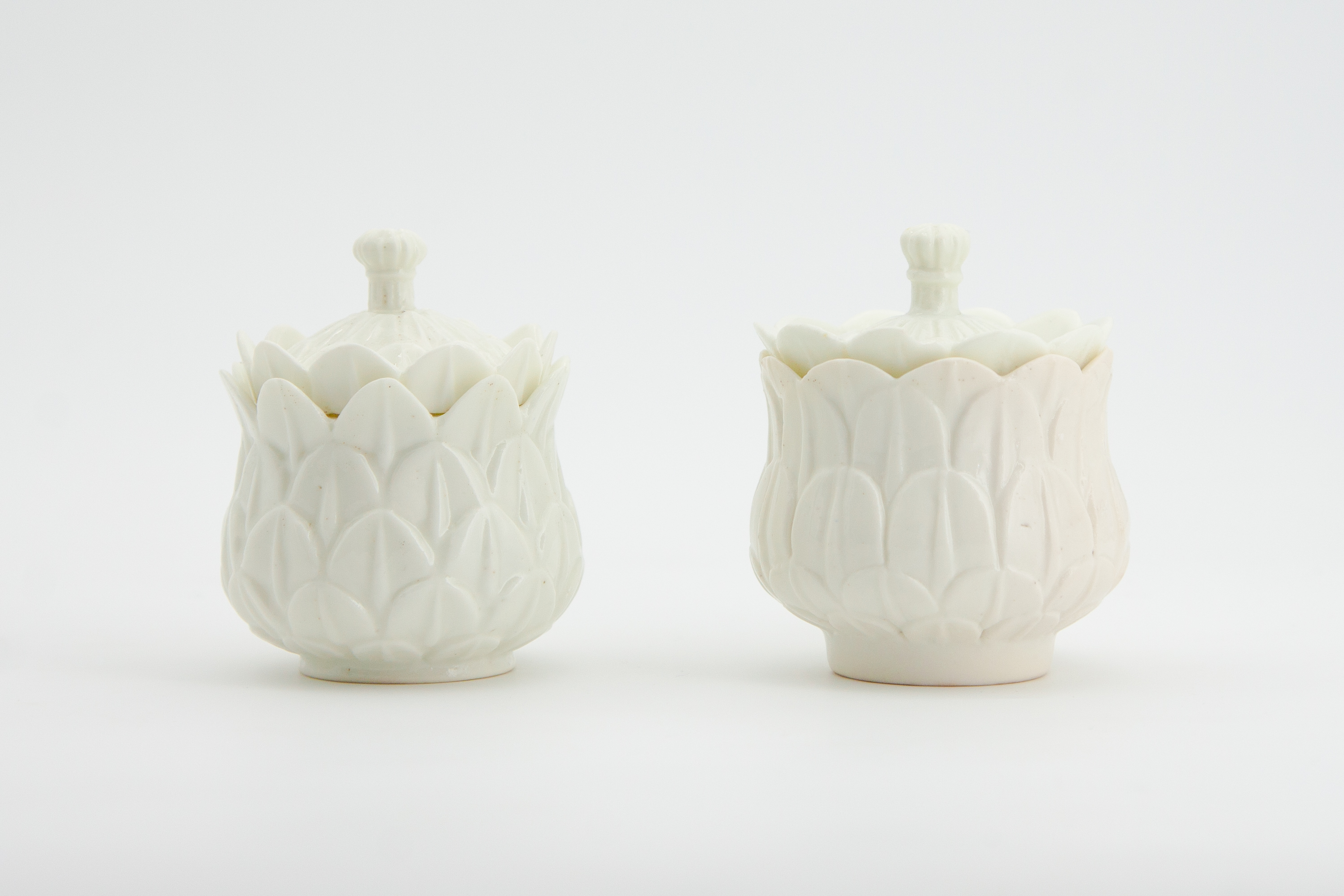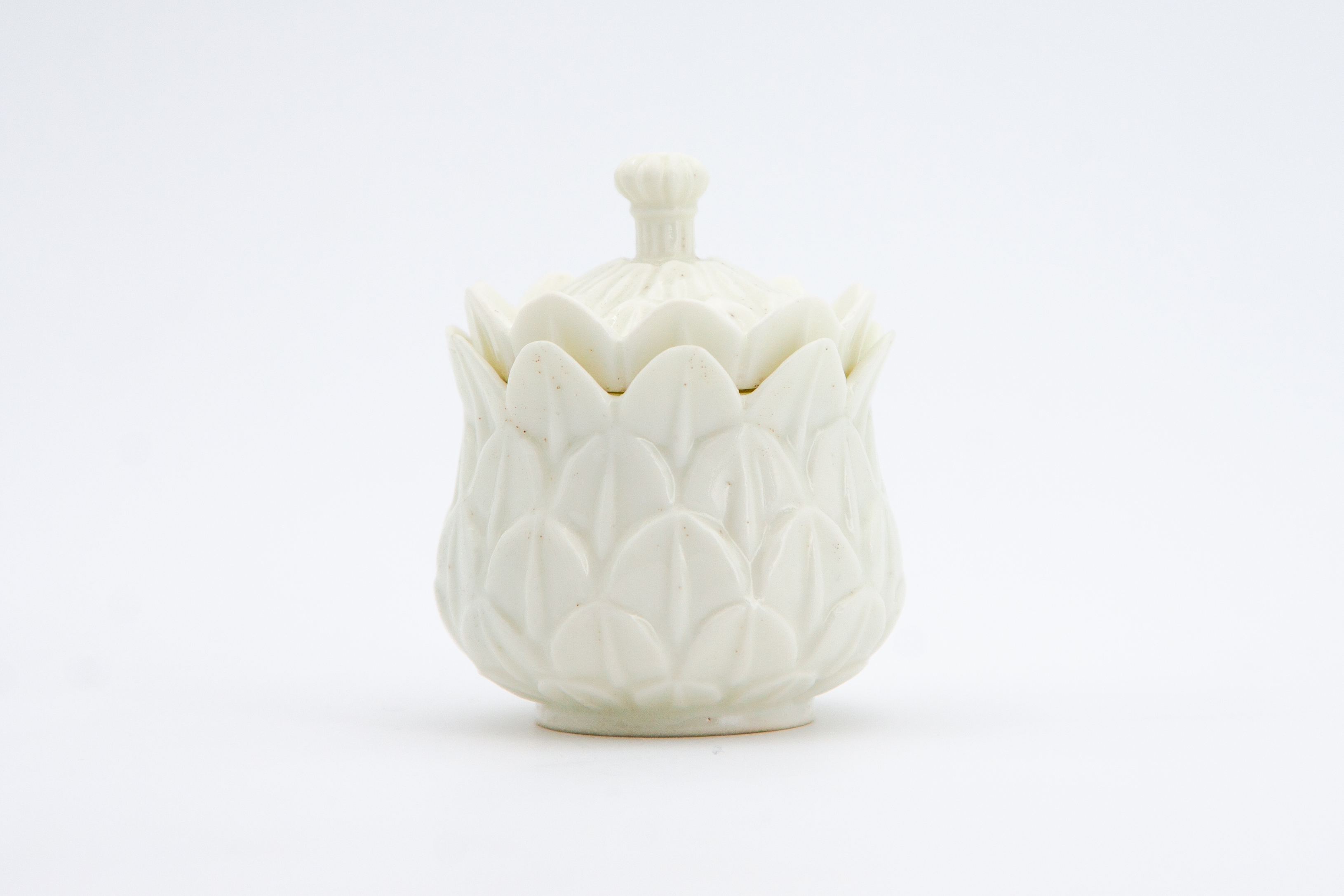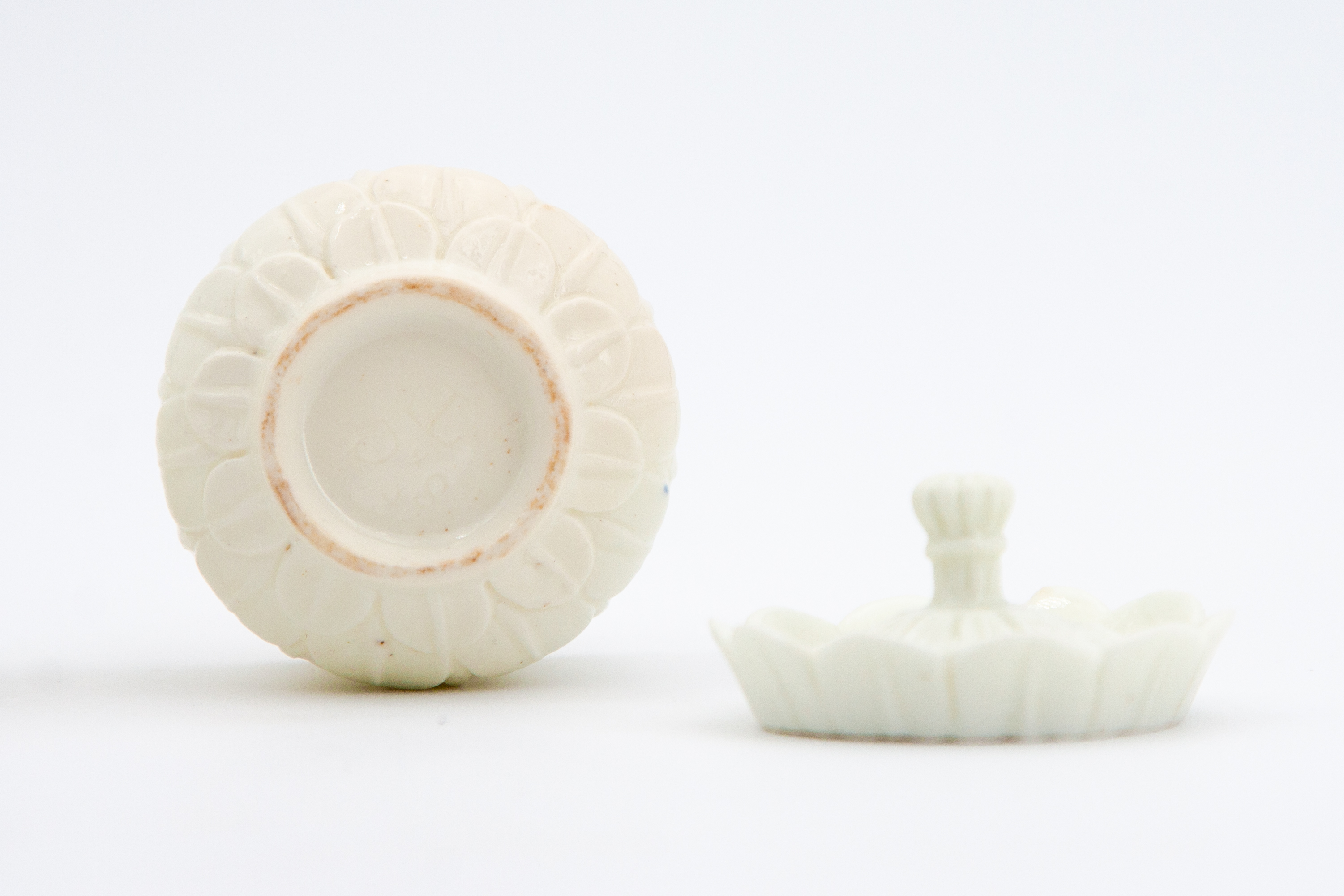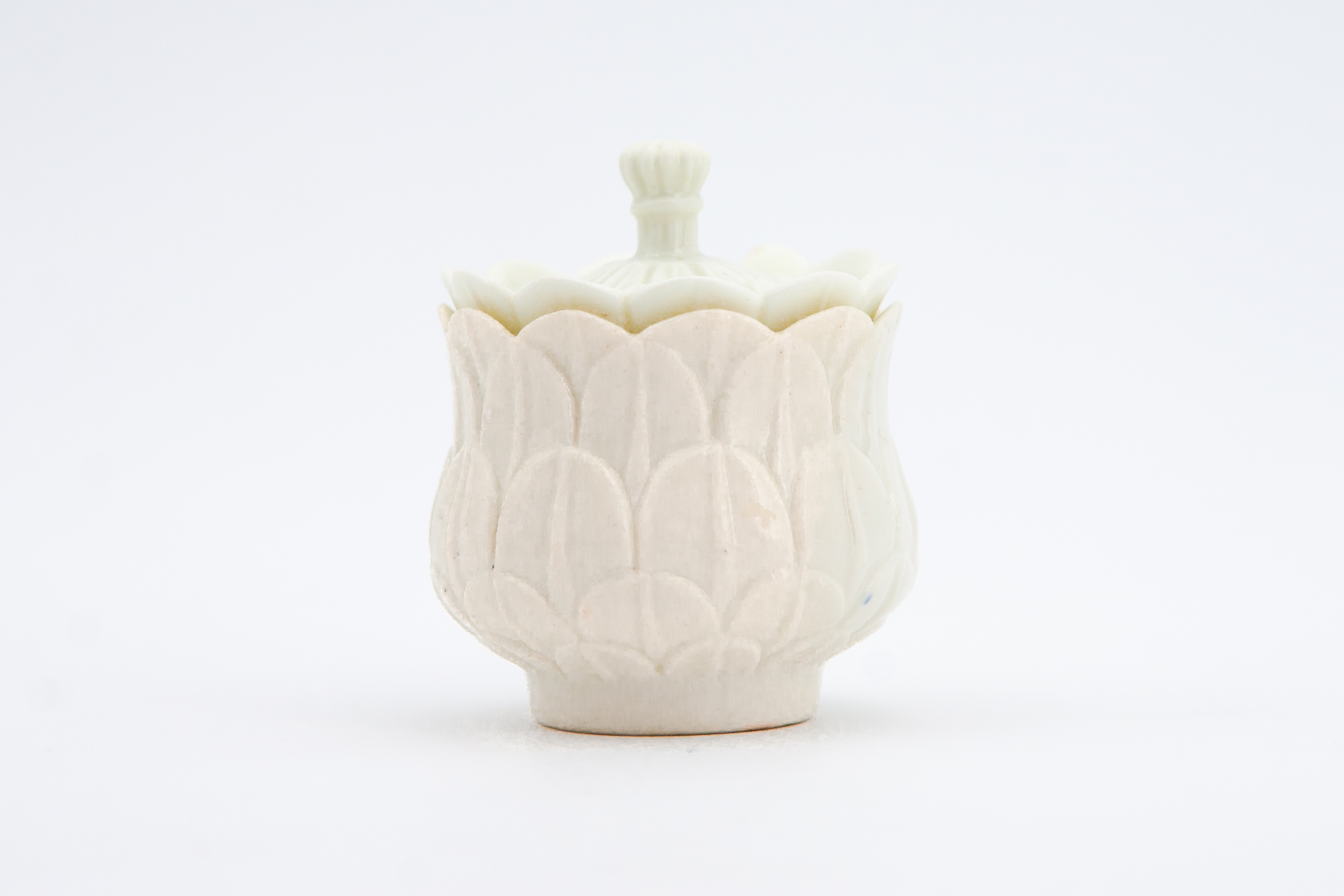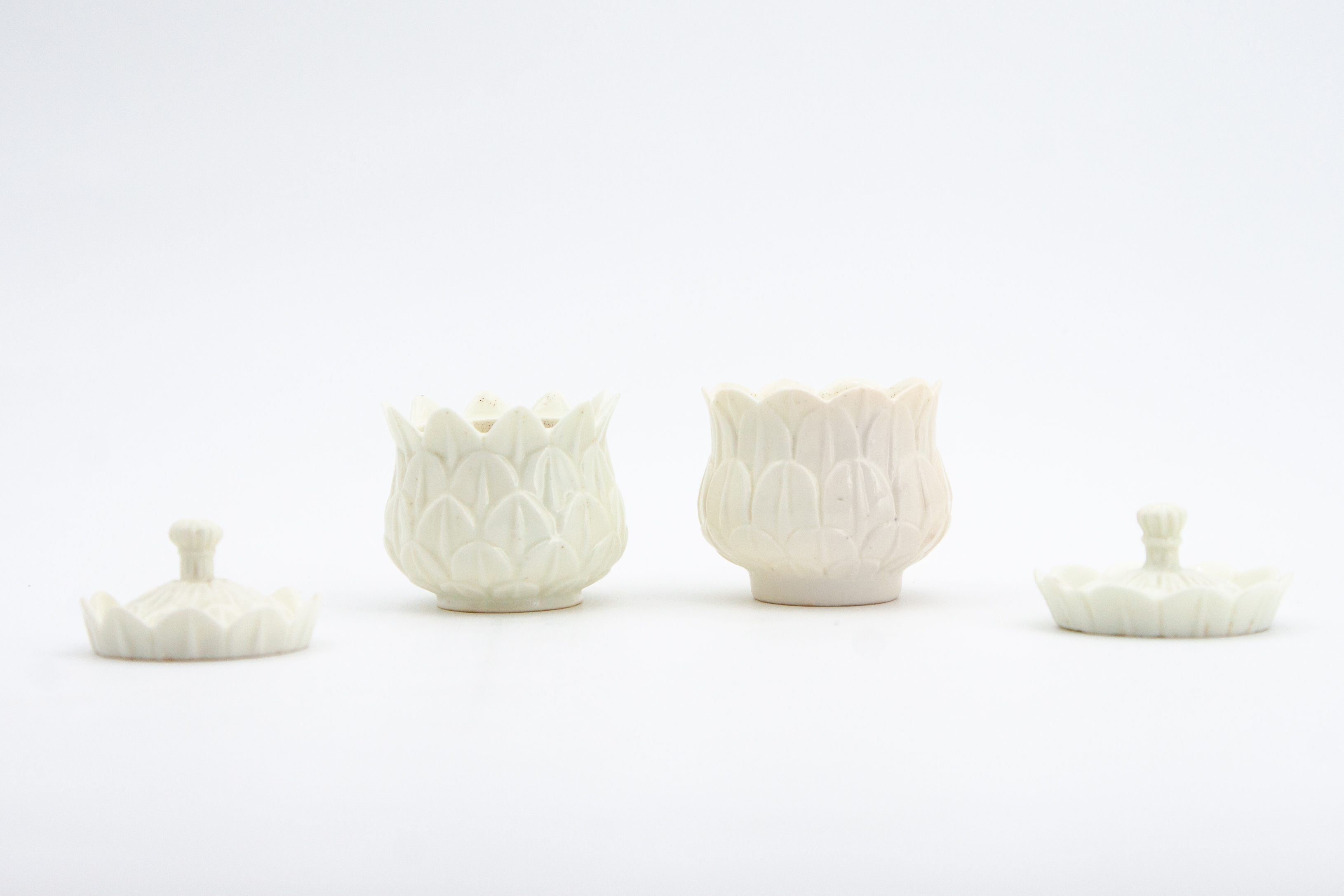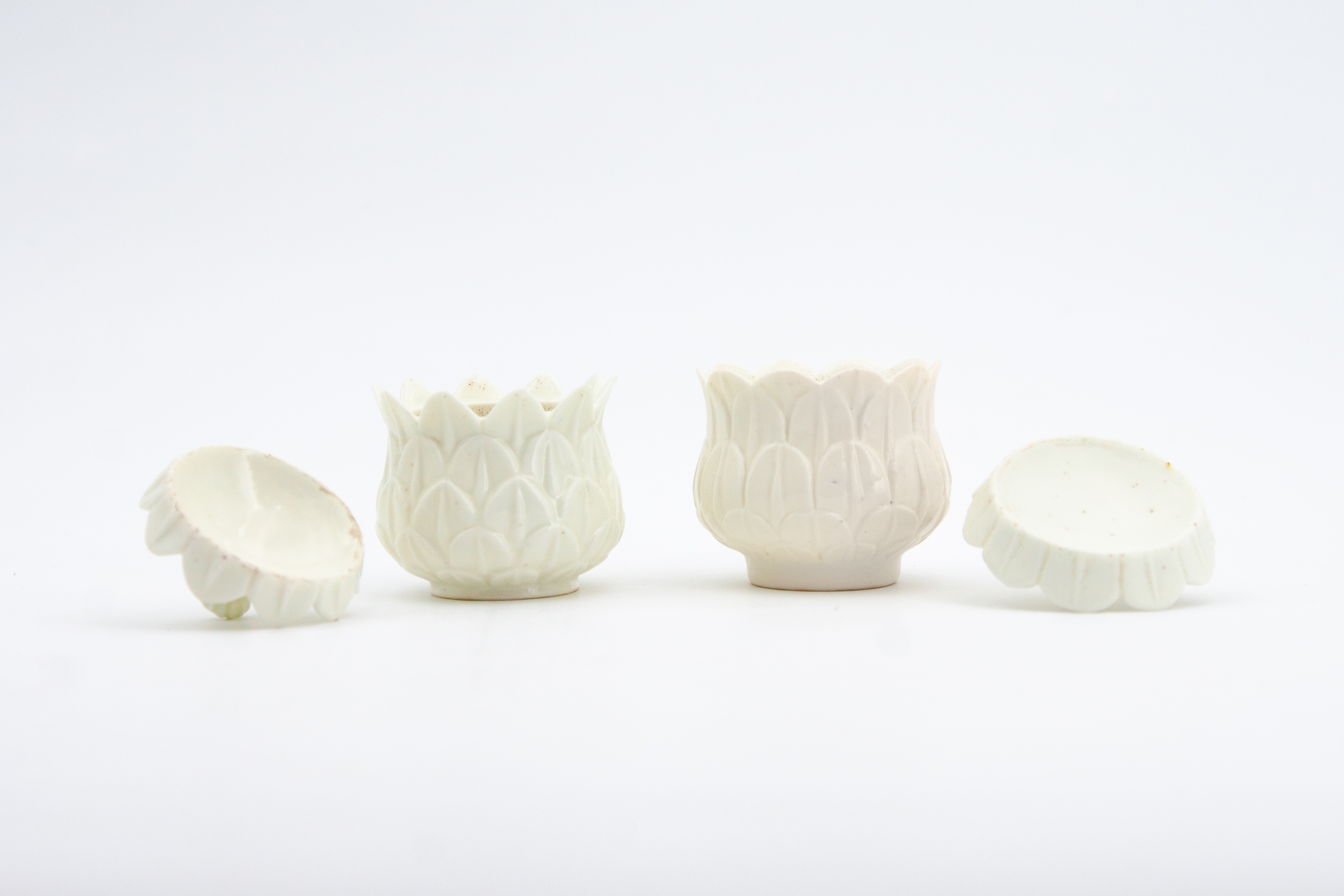Saint-Cloud’s pure white porcelain valued the quality and beauty of a material which the West had long sought to reproduce. In their undecorated state, these small porcelain pots de crème celebrate the factory’s successful endeavor to produce Europe’s first commercially available porcelain.
Saint-Cloud’s pure white porcelain valued the quality and beauty of a material which the West had long sought to reproduce. In their undecorated state, these small porcelain pots de crème celebrate the factory’s successful endeavor to produce Europe’s first commercially available porcelain.
Essay
Established as a faience manufactory, Saint-Cloud achieved the first commercially available porcelain in Europe, producing soft-paste wares as early as the 1680s. Saint-Cloud’s soft-paste porcelain differed from the highly sought after Chinese hard-paste porcelain in material and aesthetic. The French manufactory’s porcelain used clay with frit instead of kaolin and was fired at a lower temperature. This resulted in a warmer, more creamy white than the cool greyish white of Chinese porcelain.
Initially, Saint-Cloud produced blue and white wares, as did all European ceramics manufacturers who wished to emulate Chinese porcelain. Undecorated, purely white pieces such as these pots emerged at the beginning of the eighteenth century, with a surge in popularity in the 1720s, likely connected with improvements in the quality of the paste. The undecorated white wares shared the aesthetic goal of blanc de chine from Dehua, that is, an appreciation for the beauty and quality of the material. Indeed, many of Saint-Cloud’s undecorated white wares shared the motifs found on Dehua porcelains, including the prunus branch and chrysanthemum branch.
These pots are exquisitely molded as artichokes, a form which was one of the factory’s most popular. This design was inspired by the blooming lotus flowers decorations found on Chinese porcelain; its pure white form also connects to that culture’s aforementioned veneration of materials. Though these pots’ culinary-inspired form might suggest they were used at the table as containers for sauce or custard, artichoke leaves were applied to both dinner and toilette wares (the latter of which was the most popular). An example of artichoke trompe l’oeil pots as toilette instruments can be seen in Boucher’s La Marchande des Modes (1746) in which a very similar pot sits amongst other tabletop objects.
Each pot features the incised mark St C T, a mark used beginning around 1722. The added “T” at the end signifies the factory’s ownership by Henri Trou II, who gained ownership of the company in 1722.
BT
Condition
Excellent. One pot has a tiny chip to the lid measuring approximately 0.6 cm.
For a detailed condition report, please contact us.
Literature
Rondot, Bertrand ed. Discovering the Secrets of Soft-Paste Porcelain at the Saint-Cloud Manufactory, ca. 1690-1766. New Haven: Yale University Press, 1999.
References
The British Museum, 1931,1019.8.CR
Cooper Hewitt, 1958-119-1-a,b
Gardiner Museum, G96.5.74.1a-b-2a-b
Established as a faience manufactory, Saint-Cloud achieved the first commercially available porcelain in Europe, producing soft-paste wares as early as the 1680s. Saint-Cloud’s soft-paste porcelain differed from the highly sought after Chinese hard-paste porcelain in material and aesthetic. The French manufactory’s porcelain used clay with frit instead of kaolin and was fired at a lower temperature. This resulted in a warmer, more creamy white than the cool greyish white of Chinese porcelain.
Initially, Saint-Cloud produced blue and white wares, as did all European ceramics manufacturers who wished to emulate Chinese porcelain. Undecorated, purely white pieces such as these pots emerged at the beginning of the eighteenth century, with a surge in popularity in the 1720s, likely connected with improvements in the quality of the paste. The undecorated white wares shared the aesthetic goal of blanc de chine from Dehua, that is, an appreciation for the beauty and quality of the material. Indeed, many of Saint-Cloud’s undecorated white wares shared the motifs found on Dehua porcelains, including the prunus branch and chrysanthemum branch.
These pots are exquisitely molded as artichokes, a form which was one of the factory’s most popular. This design was inspired by the blooming lotus flowers decorations found on Chinese porcelain; its pure white form also connects to that culture’s aforementioned veneration of materials. Though these pots’ culinary-inspired form might suggest they were used at the table as containers for sauce or custard, artichoke leaves were applied to both dinner and toilette wares (the latter of which was the most popular). An example of artichoke trompe l’oeil pots as toilette instruments can be seen in Boucher’s La Marchande des Modes (1746) in which a very similar pot sits amongst other tabletop objects.
Each pot features the incised mark St C T, a mark used beginning around 1722. The added “T” at the end signifies the factory’s ownership by Henri Trou II, who gained ownership of the company in 1722.
BT
Excellent. One pot has a tiny chip to the lid measuring approximately 0.6 cm.
For a detailed condition report, please contact us.
Rondot, Bertrand ed. Discovering the Secrets of Soft-Paste Porcelain at the Saint-Cloud Manufactory, ca. 1690-1766. New Haven: Yale University Press, 1999.
The British Museum, 1931,1019.8.CR
Cooper Hewitt, 1958-119-1-a,b
Gardiner Museum, G96.5.74.1a-b-2a-b
This item ships free to the continental US, and globally for a flat-rate fee of $75.
All objects are packed with utmost care by our team of expert fine art shippers. All items are shipped with parcel insurance.
For more information on our shipping policies, please visit our FAQ Page.

